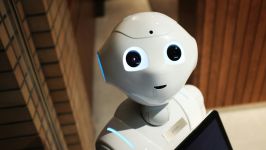The newer car models are slowly getting rid of tactile buttons you'll usually find in older cars, placing them all in one convenient touchscreen interface. While it seems easier to have all the controls on one screen, a European safety evaluator believes it might be the opposite.
Euro NCAP Says Touchscreen Are Overused
Being able to feel the buttons on your car means that you won't have to look just to press them. Seeing as screens are flat, we have no choice but to look in order to know which to tap. That's exactly what concerns the European New Car Assessment Programme (Euro NCAP).
You'll find the recent changes mostly on high-tech cars like Tesla, especially since some of the changes it has made include the turn signal controls, which are now in the form of haptic buttons on the steering wheel. That can prove to be dangerous especially during turns.
"The overuse of touchscreens is an industry-wide problem, with almost every vehicle-maker moving key controls onto central touchscreens, obliging drivers to take their eyes off the road and raising the risk of distraction crashes," Euro NCAP Director of Strategic Development Matthew Avery stated.
While a shift is not yet encouraged at this moment, a Euro NCAP tests due in 2026 "will encourage manufacturers to use separate, physical controls for basic functions in an intuitive manner, limiting eyes-off-road time and therefore promoting safer driving," as per Ars Technica.
Some of the functions are probably still suited for touchscreen interfaces, but some will serve drivers better as physical buttons, specifically turn signals, hazard lights, windshield wipers, the horn, and any SOS features.
Given European New Car Assessment Programme is not a government regulator, the suggestions are just that, suggestions. However, the safety score given by the organization does hold some weight to drivers, and having a five-star score will certainly help sales.
Volkswagen Thinks the Same
While other carmakers are still set in their ways and continue to develop touchscreen controls, Volkswagen is already thinking about bringing back physical buttons. The company CEO Thomas Schäfer himself admitted that the features "definitely did a lot of damage."
Volkswagen designer Darius Watola also mentioned that customers had a different view in Europe in regards to haptic controls, and that customers preferred physical buttons. They expect physical switches and dials for the most important functions.
Of course, the touchscreen infotainment system will remain, as reported by Car Expert, which is a welcome decision since it provides a better interface when smartphones are connected for the sake of apps for music and navigation.
Watola says that Volkswagen will be keeping the screen ahead of the driver. The size of the screen will not scale down in future models. Currently, the screen for the Volkswagen Tiguan is 15-inches in size diagonally, which makes it easier to navigate through certain functions.
For now, certain companies like Tesla might still continue with the line of haptic controls over physical buttons, but for the sake of safety, there are many who believe that tactile buttons will provide a better driving experience.









